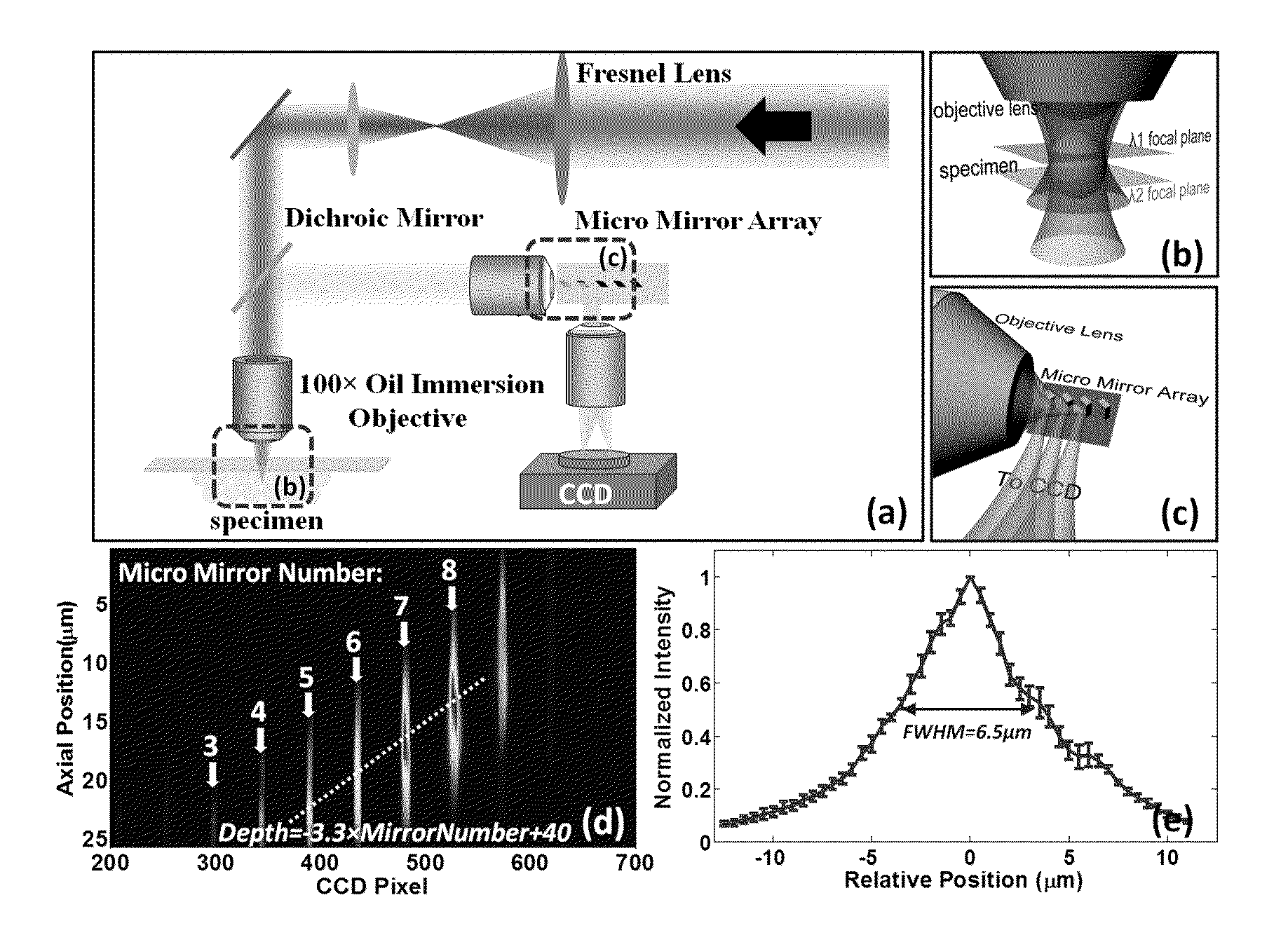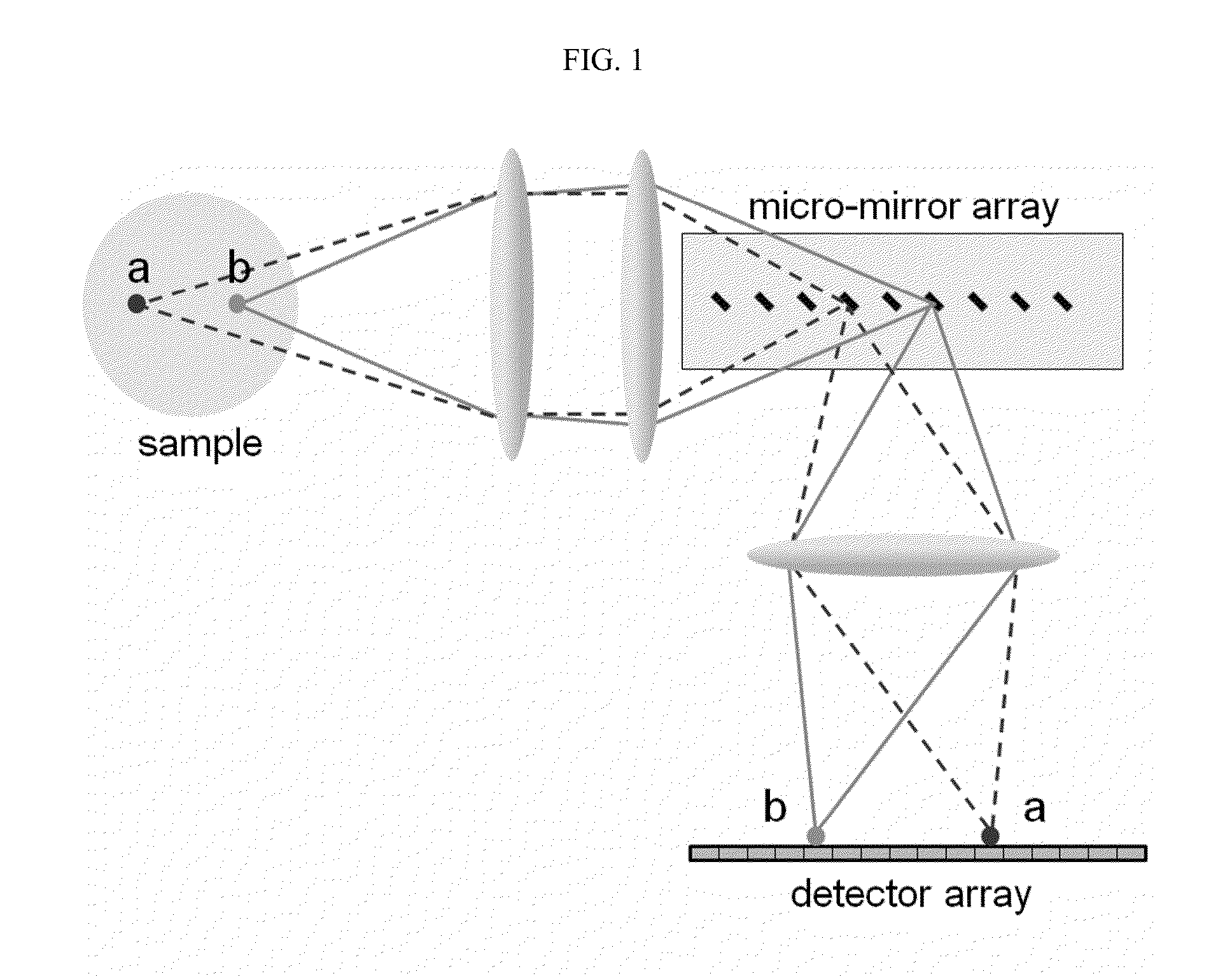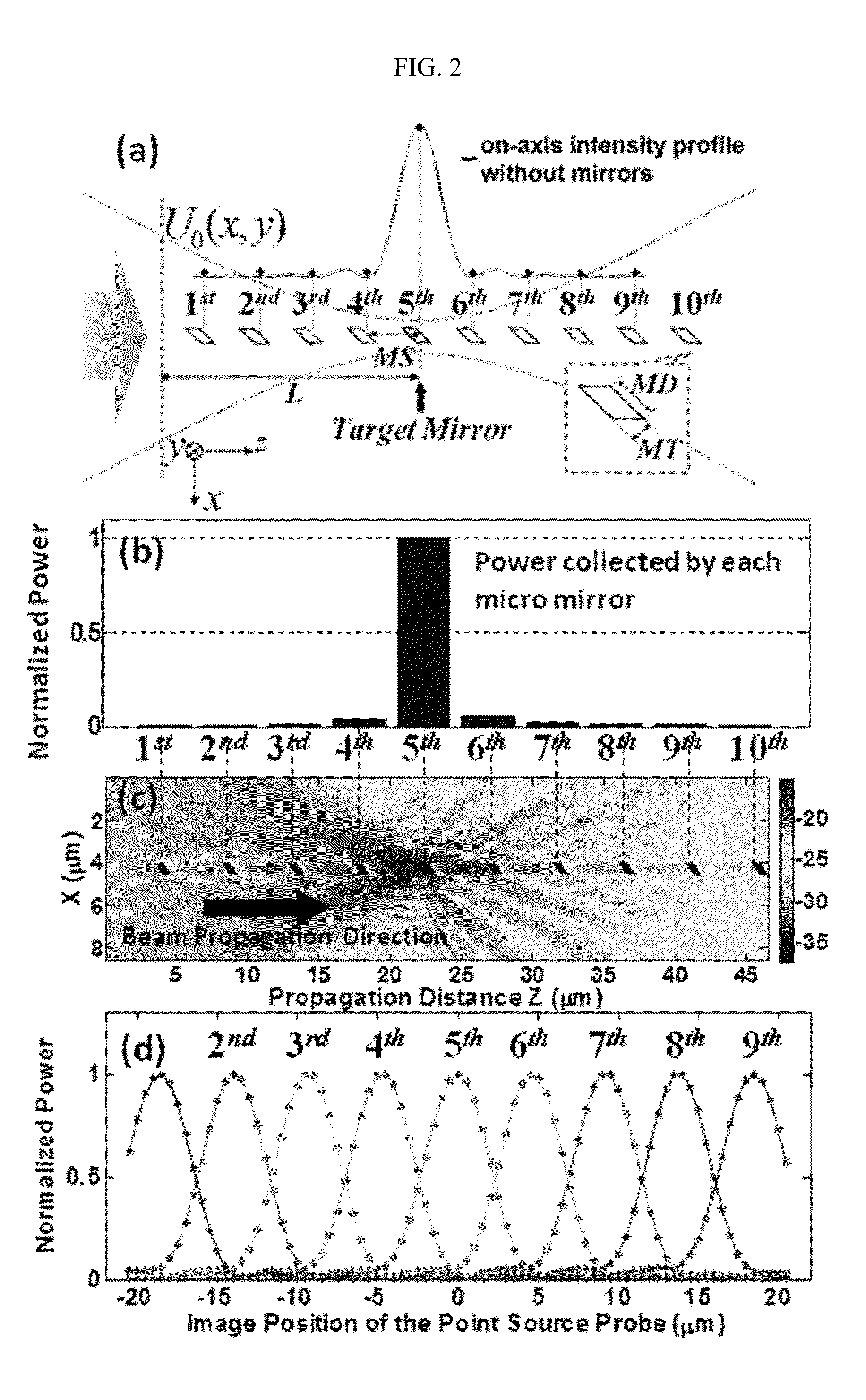Z-microscopy
a microscopy and z-microscopy technology, applied in the field of z-microscopy, can solve the problems of limiting the z-imaging speed, slow scanning, and axial (or z) direction remains a hindrance, and achieves a large numerical aperture, efficient signal reflection, and large field of view
- Summary
- Abstract
- Description
- Claims
- Application Information
AI Technical Summary
Benefits of technology
Problems solved by technology
Method used
Image
Examples
Embodiment Construction
[0029]Embodiments of the invention relate to a new method for parallel axial imaging, also known as z-microscopy. We use a micro mirror array to de-multiplex image signals generated at different axial positions. Numerical analysis of the impulse response of the proposed imaging system validates the z-microscopy concept. The technique can be applied to multiple imaging modalities, including one-photon or multi-photon fluorescence microscopy, harmonic microscopy, confocal microscopy, and plane illumination light sheet microscopy. The vertical dimension of the micro mirror array can be further exploited to image a two-dimensional (2D) axial slice. The method can be particularly useful for studying fast phenomena in the axial direction and in three dimensions. As an example, later in this disclosure we demonstrate Z-imaging of multiple microspheres located at different axial positions.
[0030]To illustrate the demultiplexing concept, the diffraction of a converging wave by an array of mic...
PUM
 Login to View More
Login to View More Abstract
Description
Claims
Application Information
 Login to View More
Login to View More - R&D
- Intellectual Property
- Life Sciences
- Materials
- Tech Scout
- Unparalleled Data Quality
- Higher Quality Content
- 60% Fewer Hallucinations
Browse by: Latest US Patents, China's latest patents, Technical Efficacy Thesaurus, Application Domain, Technology Topic, Popular Technical Reports.
© 2025 PatSnap. All rights reserved.Legal|Privacy policy|Modern Slavery Act Transparency Statement|Sitemap|About US| Contact US: help@patsnap.com



